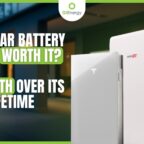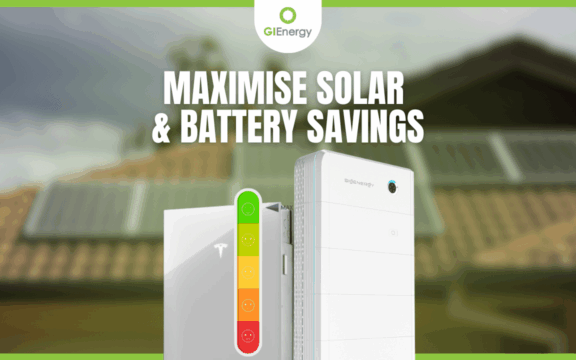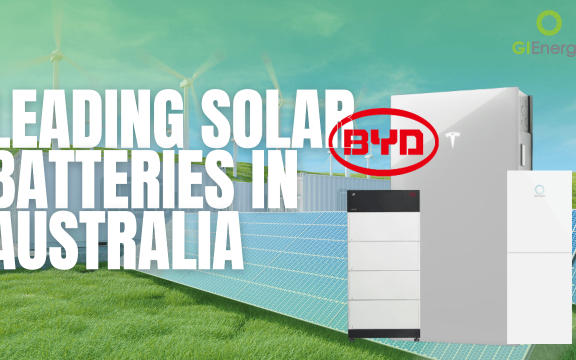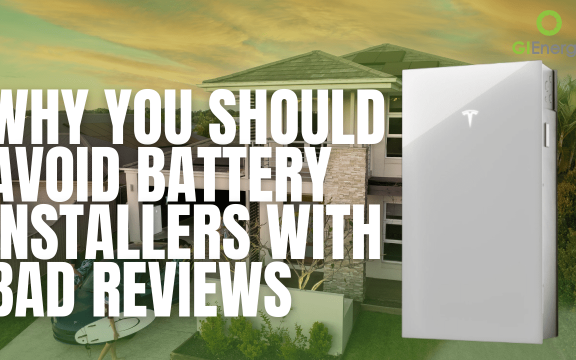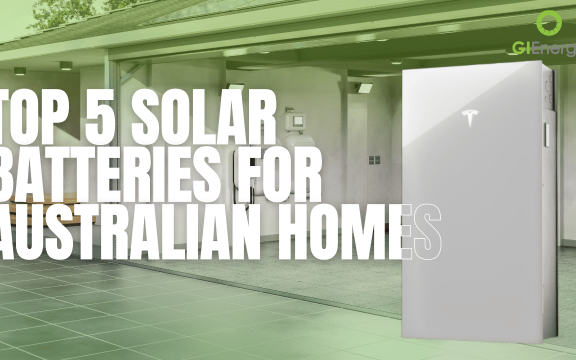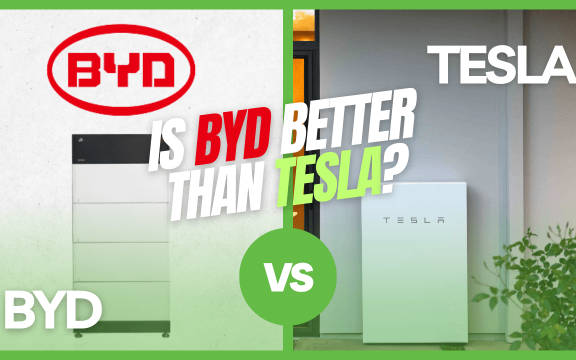Sigenergy Vs Sungrow: Which Battery Is Better for Your Home?
Quick Answer: When analysing Sigenergy vs Sungrow it has to be said that both offer excellent solar battery systems, but for most Australian homeowners looking for future-ready tech, backup, high energy density, and smart EV integration, Sigenergy edges ahead. That said, Sungrow remains a safe, cost-effective, and well-supported choice for many installations.
Sigenergy vs Sungrow: A Comprehensive Guide for Australian Homeowners
When comparing Sigenergy vs Sungrow, you’re looking at two of the most popular solar battery systems on the Australian market. At GI Energy, we install both regularly and rate them highly. However, after thousands of side-by-side installs and firsthand support experience, here’s our honest, expert breakdown.
Table: Sigenergy vs Sungrow Comparison at a Glance
| Feature | Sigenergy | Sungrow |
|---|---|---|
| Company Longevity | New entrant (less than 5 years) | Established (25+ years) |
| Support Reputation | Excellent (growing) | Outstanding (industry leader) |
| Price | Comparable (slightly higher for full systems) | Cost-effective (especially for upgrades where hybrid inverter is already in place) |
| Design & Aesthetics | Sleek all-in-one with LED interface | Clean modular design |
| Backup Capability | Full home backup (single/3 phase) | Full (change over switch needed) |
| Max Capacity (Single Stack) | 48kWh | 40kWh (SBR), 19.2kWh (SBR modules) |
| Space Efficiency | Highly compact | Larger footprint with spacing needs |
| EV Charging | AC & DC charger available | AC charger only |
| Safety | Fire suppression + gas sensors | Safe, but lacks advanced features |
| Warranty | 10 years / 70% capacity | 10 years / 70% capacity |
Company Heritage & Support
Sungrow wins here. With over 25 years in the market and long-standing support partnerships (including with GI Energy), they offer the industry’s most dependable aftercare.
Sigenergy, while new, is showing remarkable responsiveness. We had a tech on-site within 24 hours during a minor issue—that’s rare and speaks volumes. Still, newness can be a concern for some homeowners.
Price & Value for Money
Price-wise, it’s nearly a tie.
- Sungrow remains more affordable for smaller homes or upgrades (especially if you already have a Sungrow hybrid inverter).
- Sigenergy is competitively priced for what you get—all-in-one system, EV options, full backup.
Looks & Layout: Design Aesthetics
If you’re investing in a system that sits in your garage or home exterior, Sigenergy’s all-in-one design with a futuristic LED charge display is a showstopper.
Sungrow offers two types: the 5kWh SBH and 3.2kWh SBR, both stackable, and with separate inverter placement needs.
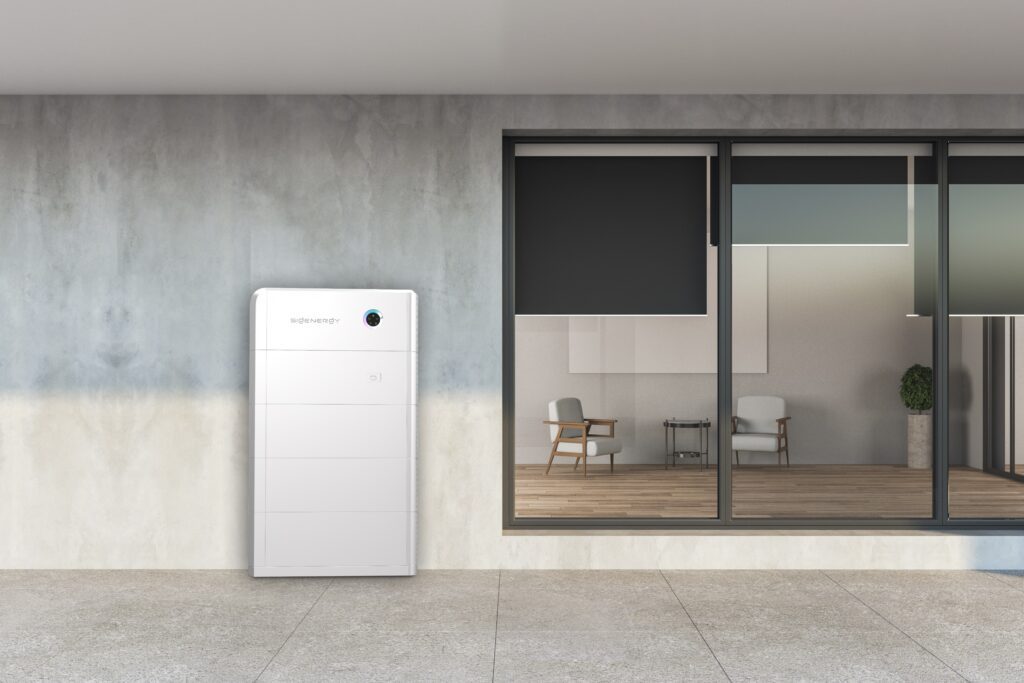
Sigenergy vs Sungrow: Backup Power & Outage Protection
Sigenergy wins here slightly due to how the back up is designed. Both products can provide single and three phase back up which his a tick in the box for both. They can also both black start meaning if you still do not have grid power when the sun comes up, the battery will charge with solar. However, the back up with Sungrow requires a changeover switch (which is a seperate piece of hardware) to be installed as well. If you do not do this and the inverter fails, the circuits connected for back up power will not work until the inverter is replaced.
This might mean your lights, fridge and whatever else you have decided needs backing up will not work until you replace the inverter or have an sparky install a changover switch. This issue is easily resolved by installing the changover switch but some installers do not do this. It is also not in the box with the inverter for the smaller inverters so will be an extra purchase.
Battery Capacity & Size
- Sigenergy: Up to 48kWh in one stack, energy dense, slim footprint
- Sungrow: Max 40kWh, but often needs more space and wiring
Sigenergy is ideal for homes with high storage needs and limited space.
Related: Is Sigenergy any good? Full review
Install Flexibility: Indoors or Outdoors?
Another close one when analysing Sungrow vs Sigenergy as both batteries are IP rated for indoor/outdoor use. However:
- Sigenergy‘s system allows battery placement further from the switchboard, albeit with higher cable costs. The Gateway (which his the sub board that comes with it) goes as close to the main switch board as possible, but the battery can be further away.
- Sungrow works best when inverter and battery are co-located.
Planning matters—talk to your installer.
EV Charging Integration
Sigenergy supports both AC and DC charging, making it the most future-ready option, especially if you’re eyeing vehicle-to-home (V2H) or faster EV top-ups.
Sungrow supports AC only—still enough for most households.
Considering an EV? See our 2025 Best Solar Battery Guide

Safety: Next-Level Engineering
Both batteries are Clean Energy Council (CEC) approved and safe. But Sigenergy takes it further:
- Fire suppression built-in
- Temperature and gas sensors
- Market-leading monitoring
Warranty & Long-Term Reliability
Both offer:
- 10-year warranty
- 70% minimum usable capacity at year 10
Sungrow’s warranty is proven with more units in the field, but Sigenergy is building trust quickly with no current issues.
FAQs: Sigenergy vs Sungrow
1. Which battery is better: Sigenergy or Sungrow?
Sigenergy is better for full-home backup, energy density, and EV integration. Sungrow is ideal for affordability and proven reliability.
2. Is Sigenergy compatible with my existing solar system?
Yes. Sigenergy offers hybrid solutions and works with existing setups, but compatibility should be confirmed with a SAA-accredited installer.
3. Does Sungrow work without an existing hybrid inverter?
No, you will need a to have a Sungrow hybrid inverter for either Sungrow battery to work.
4. Can I install these batteries outdoors?
Yes. Both Sigenergy and Sungrow have IP-rated enclosures suitable for outdoor installation. QWe always try and install them in a garage is possible as they will age better inside. There are also strict installation standards we need to follow in terms of clearance around a battery and how close it can go to other appliances etc to consider.
5. Which battery is better for EV owners?
Sigenergy offers both AC and DC EV chargers, making it ideal for current and future electric vehicle owners.
6. What is the warranty on these batteries?
Both offer a 10-year warranty with 70% retained capacity guaranteed.
Key Takeaways
- Sigenergy leads in energy density, backup capacity, safety features, and EV readiness.
- Sungrow wins on legacy support and company history.
- Both are excellent, CEC-approved choices.
- Choose based on your home layout, usage, and future plans.
About GI Energy
GI Energy is an award-winning Australian solar and battery installation company with over a decade of experience. Known for ethical practices, high-performance systems, and exceptional after-install support, GI Energy is trusted by homeowners, councils, schools, and major businesses nationwide.
Ready to Compare for Your Home?
Get a personalised savings report and see how much a Sigenergy or Sungrow battery can save you.
Request a free quote — no obligation.
Or explore our full review: Is Sigenergy Any Good?
Written by Daniel McCabe, founder and strategist at GI Energy. With over 16 years in the energy industry — from procurement to solar and holistic energy management — Daniel is focused on helping Australians take a balanced, long-term approach to their energy needs. His insights combine real-world experience with a strong belief in intelligent, ongoing support — not just one-off solar installs.
About GI Energy
GI Energy is an award-winning Australian solar and battery installation company with over a decade of experience. Known for ethical practices, high-performance systems, and exceptional after-install support, GI Energy is trusted by homeowners, councils, schools, and major businesses nationwide.


